Great Falls' Lewis and Clark Center celebrates its history while planning for its future
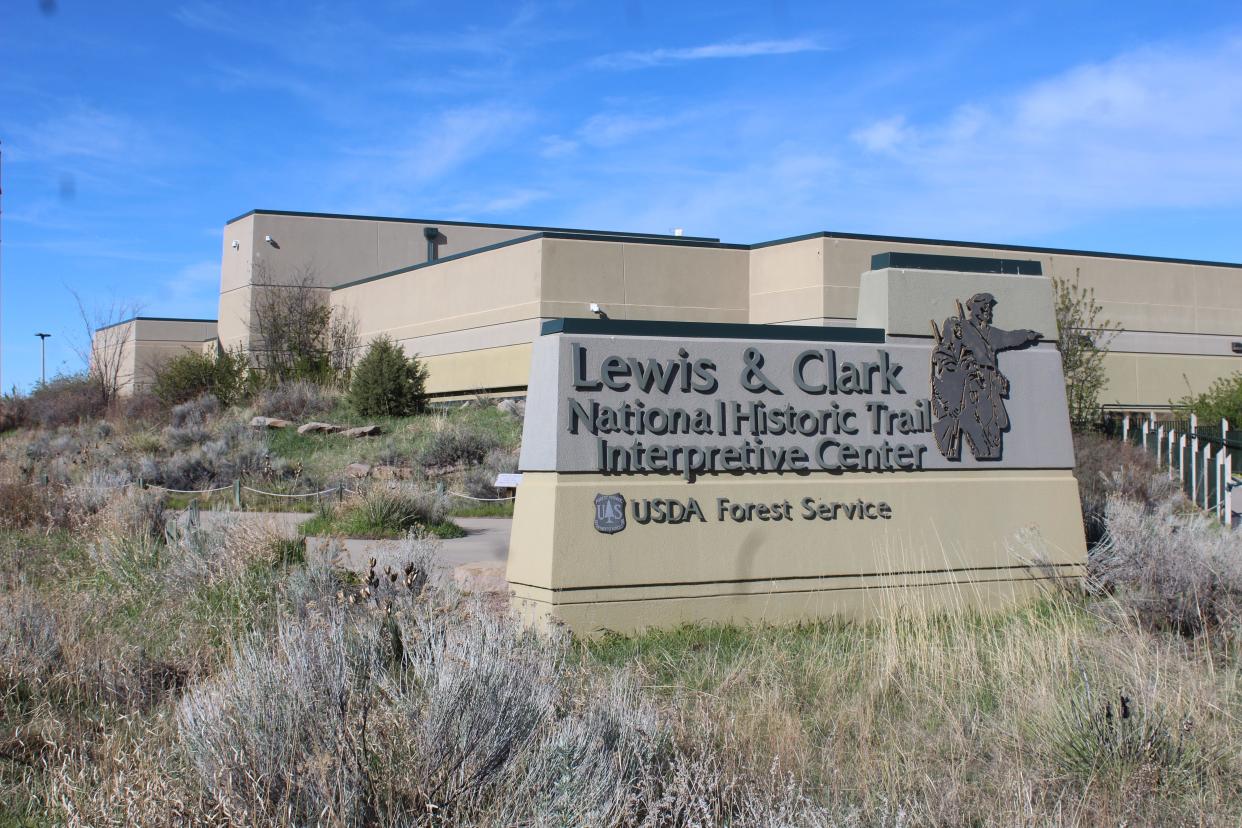
- Oops!Something went wrong.Please try again later.
- Oops!Something went wrong.Please try again later.
Just upstream from Giant Springs State Park, the Lewis and Clark Interpretive Center blends into the sandstone bluffs like a smooth Cubist sculpture seamlessly matched to the Missouri River landscape. Though it lies within the furthest northeast boundary of Great Falls city limits, the view from the center’s two-story tall windows is stunning, a scene of the Missouri that Meriwether Lewis, William Clark, and the 30 men of the Corps of Discovery would have recognized in their journey to explore the uncharted west.
“I count it a privilege to call it my place where I’m working at,” said Duane Buchi, Director of the Lewis and Clark Interpretive Center.
This Sunday, May 5, marks the 26th anniversary of the opening of the Interpretive Center in 1998. The motivation for it’s construction was to promote the Lewis and Clark story as a draw for tourists to Great Falls during the “Voyage of Discovery’s” bicentennial celebration.
“Those festivities began in 2003,” Buchi recalled “In this area they were in earnest in 2005, because that was when they came through here two centuries ago on their initial trip to the west.”
Explore Great Falls: Taking in the beauty and history of First People's Buffalo Jump State Park
Although it has been nearly two decades since those festivities concluded, the Interpretive Center remains one of Great Falls’ most popular tourist destinations. It is consistently ranked on Trip Advisor as the number one place to visit in Great Falls, drawing close to 50,000 visitors annually from all parts of the globe.
This April at the Montana Governor’s Conference on Tourism and Recreation, the Lewis and Clark Interpretive Center was recognized as Montana’s Tourism Destination of the Year. Each year the award honors one tourism enterprise for their “outstanding achievements to advance tourism through marketing, product development, destination events and activities.”
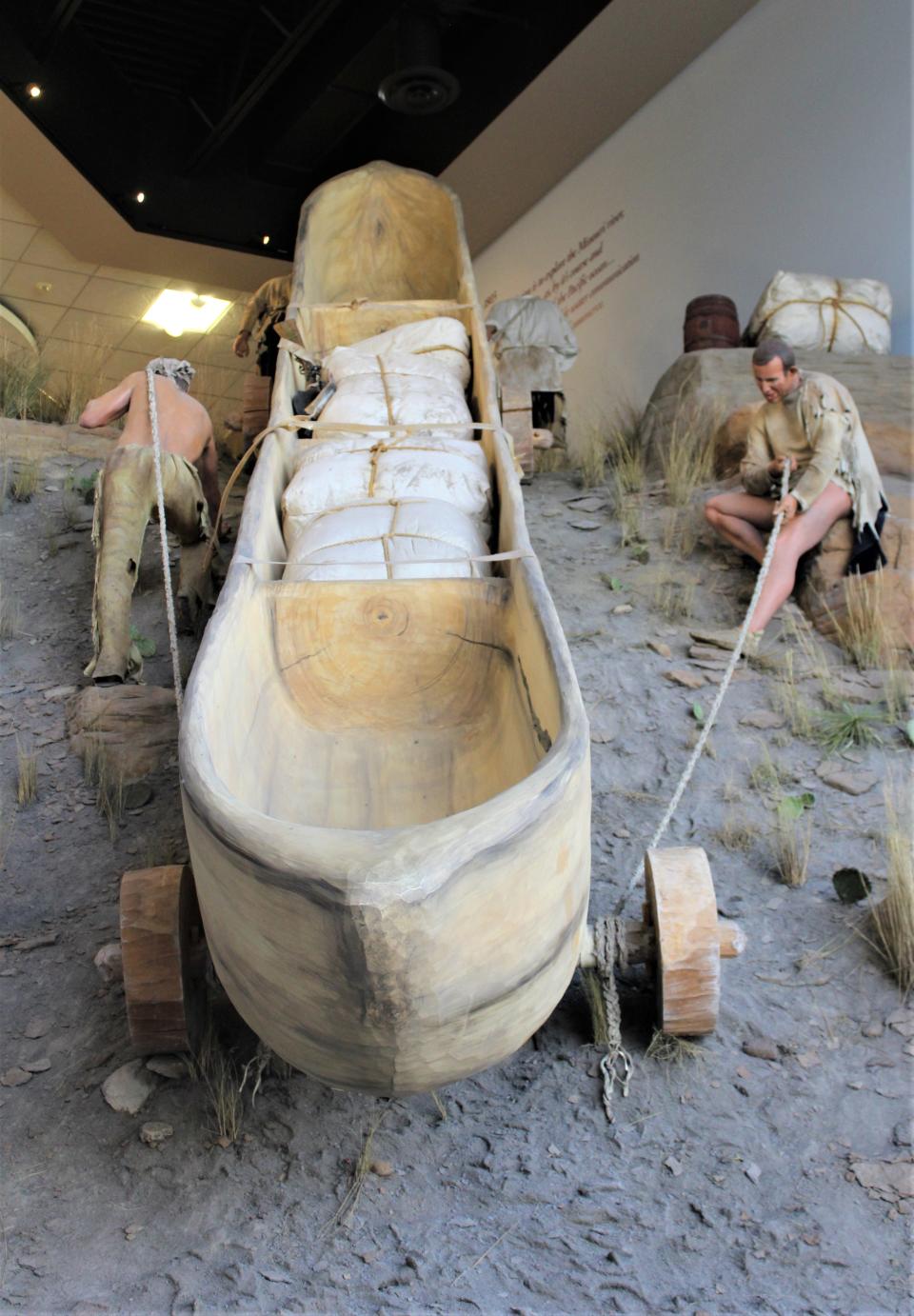
Managed by the U.S. Forest Service, the 25,000 square-foot building includes two floors of exhibits chronicling the Lewis and Clark Expedition, along with regular multimedia presentations in its 158-seat theatre, guided tours, and a historical research library.
While the Lewis and Clark Interpretive Center is an impressive fixture in Great Falls today, it was nearly never built at all. In the mid-1980s when the concept of an interpretive center was first floated the city was in a rough patch. The smelter had closed and the Anaconda stack had been blown up. The population was dropping, and Great Falls was no longer Montana's largest city. The riverfront was an industrial area and that's it, with the River's Edge Trail still years away (it opened in 1991).
Buchi credits the center’s ultimate completion to a small group of community leaders who believed in the project, and to one man in particular, Mike Labriola.
Newly retired as a full colonel from the Air Force, Labriola was hired as director of the Great Falls Chamber of Commerce. An avid Montana history buff, he worked tirelessly to promote the idea of the Interpretive Center, raising money to build it and rallying the community to support the idea.
“It all started really as a community effort,” Buchi explained. “It was a civic initiative. They tried to lobby and bring awareness to the Congressional delegation about what had occurred here, why this was important, and encouraged them to be better stewards of this place and do something with it.”
In 1987, Labriola led a delegation to Washington, D.C. to testify for the need for an interpretive center along the Missouri River in Great Falls. Almost immediately they met with disappointment.
“Initially the thought was the National Park Service would run this site, but they turned it down,” Buchi explained. “Dale Gorman, who was the superintendent of the Lewis and Clark National Forest at the time – he’s the one who raised his hand and said we’ll take that on.”
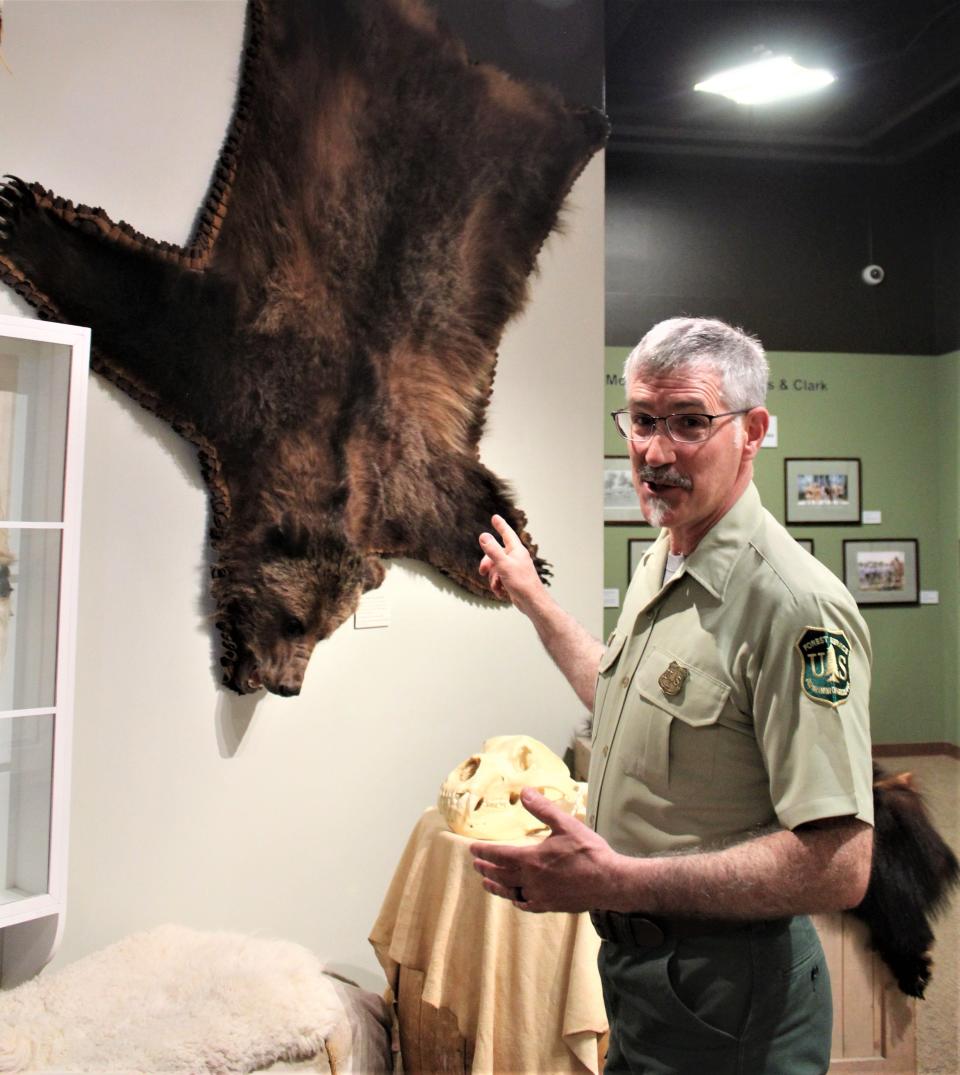
The property the Interpretive Center now stands upon today belonged to the State of Montana at that time. It was deeded to the U.S. Forest Service that the Interpretive Center would become a reality. However, the federal government offered only partial funding for the project, with the prospect of federal matching funds if the city was able to raise $3 million within two years.
Organizers met that funding goal on time, raising $3.1 million with the help of large donations from Great Falls Shipping Association and $1 million from the Montana Power Co. Groundbreaking for the $6.2 million Lewis and Clark Interpretive Center took place in 1996.
Buchi noted that the Lewis and Clark Interpretive Center in Great Falls is only one of 212 different historic sites along the Lewis and Clark National Historic Trail, which stretches across 16 states and 4,900 miles from Pittsburgh to Fort Clatsop on the Oregon Coast. The Center in Great Falls is one of the largest of these sites, and is also unique in that offers a complete overview of the expedition, from its inception following the purchase of the Louisiana Territory in 1803 to its conclusion in St. Louis, Missouri after a journey lasting 28 months.
“We certainly have a focus point,” he said. “(The Great Falls of the Missouri River) is where they spent a longer time than anywhere on the trail except when they wintered in North Dakota and out on the Pacific Coast. So, we put a special emphasis on that portage but the whole story is told here. I think that’s what really captures the essence of the expedition.”
The Interpretive Center has also recently made some significant physical improvements to the facility. Benefiting from grants from the Great American Outdoors Act and the Missouri-Madison Fund, the center has been able to repave its parking lot, install new LED lighting in the parking lot, replace a wooden bridge leading down to the Rivers Edge Trail, and replace a broken elevator that allows handicap access to a paved trail that leads the Missouri River’s edge.
Right now, the center is in the midst of a three-phase project to refresh and refurbish 15 displays in the exhibit hall.
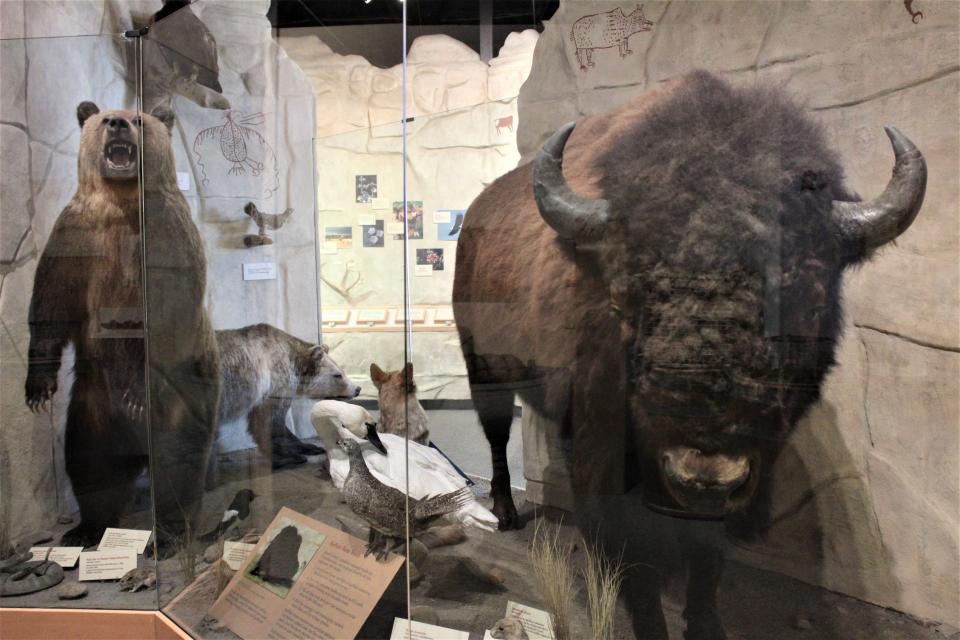
“There’re just some areas that are very well loved,” Bushi noted. “We’re not looking to change anything. We’re just looking to refurbish and bring up the standards of some things.”
“And there are two new things that are coming,” he added. “At the very end of exhibit hall tour there’s going to be a kids’ zone where there will be interactive opportunities for kids. They’ll be a place to get a selfie taken and where they can try on different clothing of the era, that kind of thing. Then there will be a more pronounced thank you to all our visitors who complete the tour, along with an acknowledgement the American Indians and where they are today.”
All this is being done with a paid staff that in the winter only numbers five full-time employes and one part-time. Bushi said that without the contributions of time and effort made by more than 40 volunteers – some of whom have been donating their time to the Center since it opened – that the visitor experience at the Lewis and Clark Interpretive Center would only be a shadow of what it is today.
“They are passionate about this place to the depth of their souls, and that certainly isn’t something that’s lost on people when they come through these doors,” he said. “They sense the energy, the passion, the excitement to share this place. They’re the ones that take a wonderful facility and make it an incredible experience for our visitors.”
May marks the beginning of the Interpretive Center’s busy season, but there are special presentations and activities scheduled at the facility all year long.
“There’s always a lot going on, from festivals to guest speakers and presentations in our auditorium,” Bushi noted. “During the winter we check out snowshoes for free to the general public. Once a month we do ranger led hikes with people, we’ve got our annual Lewis and Clark Festival. That’s coming on the 22nd of June. That’s all free and gives us a chance to connect with our community.”
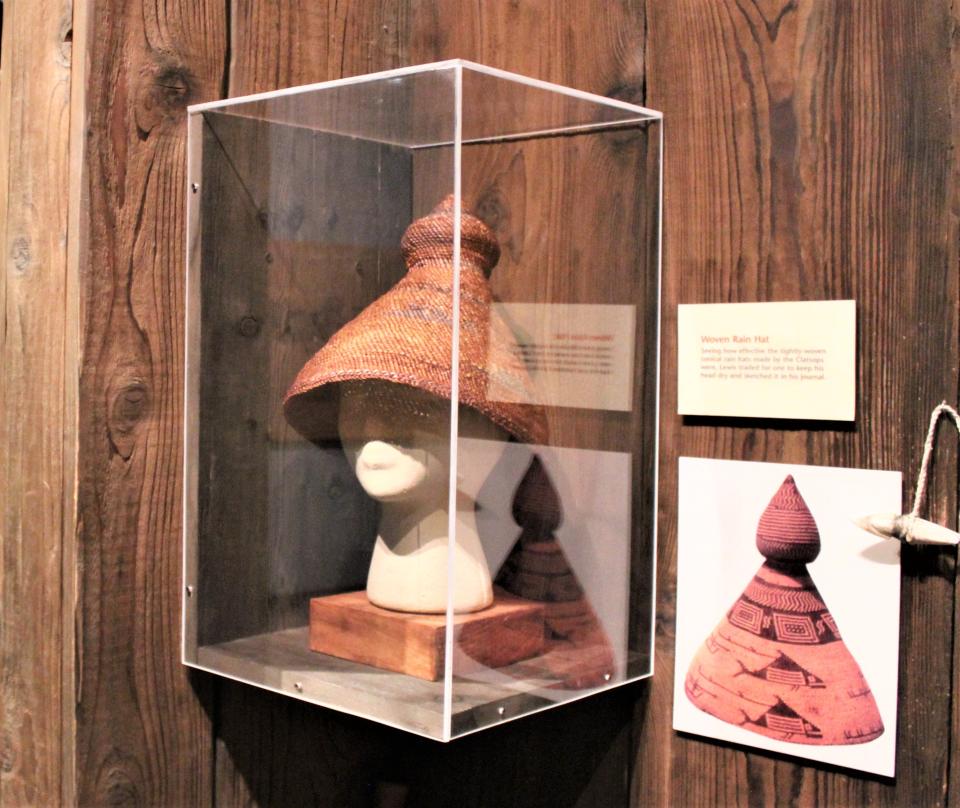
The Lewis and Clark Interpretive Center located at 4201 Giant Springs Road in Great Falls. Between Memorial Day and Labor Day it's open seven days a week, from 9 a.m. to 7 p.m. The rest of the year the Interpretive Center is closed on Mondays.
There is an $8 entrance fee for adults. Children 15 and younger are free. For more information visit https://www.fs.usda.gov/recarea/hlcnf/recarea/?recid=61458 or you can call the Interpretive Center at 406-453-6248.
This article originally appeared on Great Falls Tribune: Lewis and Clark Center cited among Montana's best tourist destinations

